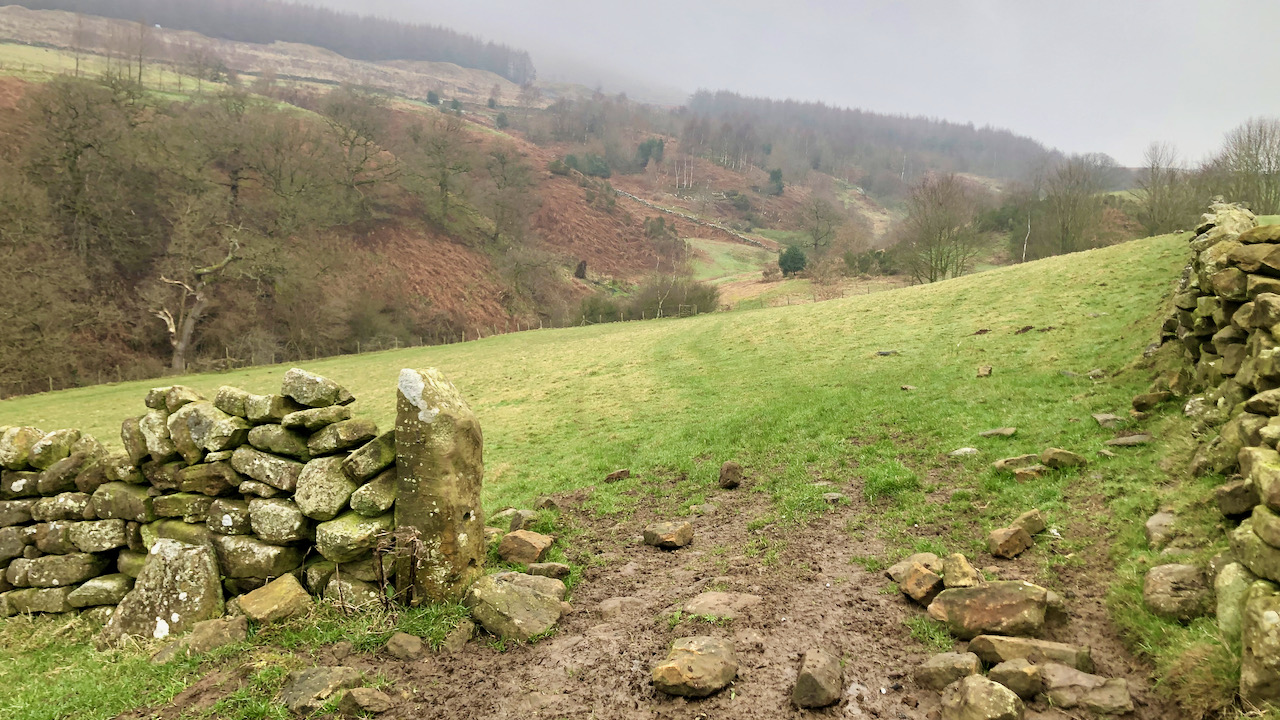Upon the high moors near Young Ralph Cross at Rosedale Head, a commemorative stone stands in honour of Frank Elgee, a notable naturalist and archaeologist, who once curated the Dorman Memorial Museum in Middlesbrough. His wife and “assistant,” Harriet Elgee, was a knowledgeable writer and poet in her own right.
I recently came across a newspaper article from 1934 reporting on a paper attributed to both of them, but presented by Harriet to the Anthropological Section of the British Association, bearing the title “Megalithic Cult of the Moorlands of Yorkshire.”1‘Talisman Stones | Daily Gazette for Middlesbrough | Monday 10 September 1934 | British Newspaper Archive’. 2024. Britishnewspaperarchive.co.uk <https://www.britishnewspaperarchive.co.uk/viewer/bl/0000159/19340910/097/0004> [accessed 9 March 2024]
Initially, Harriet Elgee elucidated that the term “megalithic” in the title conveniently meant standing stones of all dimensions, both large and small, and intriguingly, stone gate posts as well. Although, nowadays, the term predominantly carries connotations of prehistoric significance. She concluded with the following assertion:
“There is ample evidence to prove that these standing stones were primarily fertility and life-giving symbols. The bevelled pillar is essentially male and has a wide distribution. The slab and rounded pillar are female and represent the Earth Mother.
“In North-East Yorkshire, its use has persisted into our own day. A farm is not complete, nor will good luck attend on it unless a pillar, usual(ly) bevelled, is erected in a pasture for cattle to rub against.
“Again, almost every field has its magical gate-posts. Sometimes both are bevelled; sometimes one is bevelled and the other rounded or left unbevelled at the top. At Manor Farm, Kirby-in-Cleveland, the gateposts are called the Farmer and the Farmer’s Wife; in Danby Dale, they still talk of male and female gateposts. At Nuddington, the good churchwarden deliberately slashed off a corner of his newly erected cottage gate-post, for otherwise he would never have any luck.
“Only last week we found a friend of ours at Goathland, who, through living most of his life in London had lost touch with local tradition, sorely puzzled about his gate-posts. Be knew that they had been erected by excellent stone-masons, and he could not understand why they had deliberately mutilated them after their erection.
“Wooden gateposts are gradually taking the place of stone, but the moorland farmer is usually careful to get them shaped in the traditional manner. Even in our urban areas, where our origins are forgotten, the traditional shapes, both male and female, persist in wood and metal palisading, door and gateposts, boundary stones, road-stones, milestones, and the like.”
While this seemingly mystical rationale for standing stones doesn’t appear entirely implausible, as far as I’m aware, it hasn’t gained much traction. Yet, expanding the theory to encompass all upright stones, including gateposts and stoups, is intriguing. The allusion to local superstitions about gateposts, in particular, is quite tantalising.
However, my investigations have yielded no other reference to this custom. Wikipedia remains silent. Is this a dead end of a metaphysical theory?
There does exist some charming folklore in Ireland concerning gateposts2‘Adeste Fidelis …! | Middlesex County Times | Saturday 26 December 1959 | British Newspaper Archive’. 2024. Britishnewspaperarchive.co.uk <https://www.britishnewspaperarchive.co.uk/viewer/bl/0002465/19591226/007/0001> [accessed 9 March 2024]. Gateposts with flat tops were considered lucky, as fairies are believed to dance on them, especially if a platter of mashed potatoes is carefully placed on top during Hallowe’en. Someone else suggested conical tops adorned with sharp stones; these might repel fairies, but the Devil himself could not perch on top, ensuring good fortune!
While there seems there are no widely documented superstitions specifically about gateposts, there are intriguing folklore connections to consider:
In many cultures, doorways symbolise transitions between worlds, whether from the physical to the spiritual or from the outside world to the haven of the home. This imparts symbolic power to them, sometimes giving rise to superstitions around their protecting. The practice of placing horseshoes above doorways for good luck might be connected to this notion. Gateways could be said to echo this belief.
Gateposts also serve as markers for property boundaries, and certain cultures may harbour beliefs about safeguarding that boundary. Leaving offerings or charms at the gateposts could be a method of warding off evil or misfortune.
Finally, in some traditions, particularly those involving megaliths or large standing stones, the stones themselves are imbued with spiritual significance. If gateposts are constructed of stone, there might be ancient beliefs attached to them, even if not directly spoken about anymore.
So I set myself the task today of locating such a pair of gateposts, one bevelled and the other rounded. I set out on a circuit of Cringle Moor, only to realise swiftly that most field gates have been widened to accommodate modern farm machinery. Single stone gateposts abound, with the other either missing or replaced by a timber one. In Raisdale, I discovered a good example of what I envision as a ‘bevelled’ gatepost. While it might be wishful thinking or I might have got the wrong end of the stick, it does appear as though it has been intentionally crafted rather than merely suffering a blow from a passing tractor.
My quest for a pair of male and female gateposts continues.
- 1‘Talisman Stones | Daily Gazette for Middlesbrough | Monday 10 September 1934 | British Newspaper Archive’. 2024. Britishnewspaperarchive.co.uk <https://www.britishnewspaperarchive.co.uk/viewer/bl/0000159/19340910/097/0004> [accessed 9 March 2024]
- 2‘Adeste Fidelis …! | Middlesex County Times | Saturday 26 December 1959 | British Newspaper Archive’. 2024. Britishnewspaperarchive.co.uk <https://www.britishnewspaperarchive.co.uk/viewer/bl/0002465/19591226/007/0001> [accessed 9 March 2024]

Leave a Reply